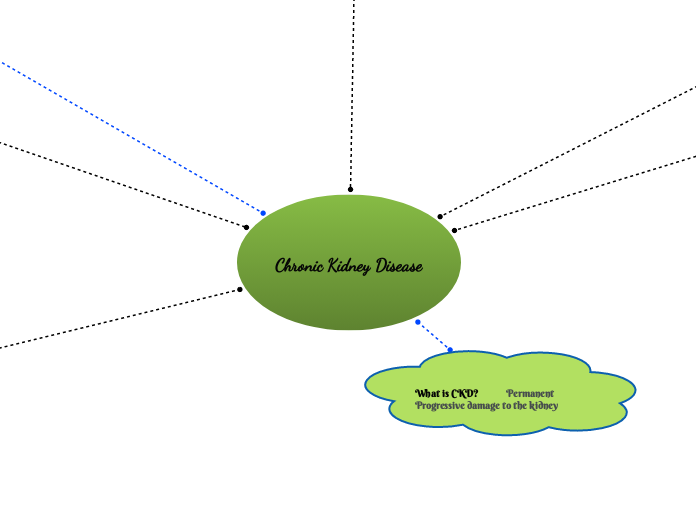Chronic Kidney Disease
Main Risk Factors?
Diabetes
Hypertension
Heart disease
Glomerulonephritis
Age(over60)
Anatomical abnormalities or inherited condition
Polycystic kidney disease
Ethnicity
African American
Hispanic
Native American
Symphoms
Change of Urination
foamy,bubbly
greater or less amount of urine
darker or paler of color of urine
difficulty urination
Fluid Retention (Extra fluid in the body)
Swelling (legs, ankles, feet face or hands)
Anemia
EPO tells the body to make RBC which carries oxygen
feeling cold
Fatigue
weakness
Memory problem
Trouble concentration
Dizzines
Uremia
Rash/ severe itchiness
Difficulty sleeping might need med and moisturizer
Metalic taste, Ammonia breath
Nausea/ Vomiting
What is CKD? Permanent Progressive damage to the kidney
Main Helathy Kidney Roles
Regulation of fluid volume
Regulation of BP
Blood PH balance
By Regulating
H+ and Hco3-
Elimination of metabolic waste
Urea
Creatinine
Drug(water soluble)
Toxin
Ca2+,Na+ K+ Cl- Mg2+
H+/Hco3-
Metabolic process
glycogenesis
glycogenolysis
Vit D synthesis
Endocrine
Renin for RASS(maintain BP)
Erythropoietin
production of RBC
5 Stages of CKD in GFR(ml/min/1.73m2)
Stage 1
Normal Kidney >90
Stage 2
Mild Damage 60~89
Stage 3
Moderate Damage 30~59
Stage 4
Severe Damage 15~29
Stage 5
Diagnosis
GFR
Common blood test to see how well the kidney are filtering
Urine Albumine
Checks for a protein that passes into urine when the kidneys are damaged
Serum Creatinine
BUN comes from the breakdown of protein in the foods people eat.(normal range :7~2mg/dl)
kidney scan
check size of kidney
kidney biopsy
check cell damage
Chest X ray
to check pulmonary edema
Management of CKD^
Medication
BP control
ACE inhibitor
Angiotensin II receptor blockers
Glucose control
insulin
Metformin
glinides
to lower Cholesterol level to reduce the risk of heart disease
Startins
to treat Anemia
erythropoiesis
Iron supplement
to relieve swelling
Diuretics
to protect bones
Calcium and Vit D Supplements
phosphate binder
Diet
Low slat
Low K+
Low P-
life ryle
exercise
Physical activity also help controlling hypertension,diabetes, heart disease.
smoking cessation
Avoid NSAIDs and Aminoglycoside antibiotics
limit alcohol and coffee
Medical treatment for ESRD
Dialysis : artificially removes waste products and extra fluid from blood when kidneys can no longer do this
Hemodialysis
A machine filters waste an d ecess fluids from the body
peritoneal dialysis
Kidney Transplant
Surgically placing a healthy kidney form a donor into a recipient's body
After a transplant, need to take medications for the rest of recipient's life to keep the body from rejecting the new organ.
